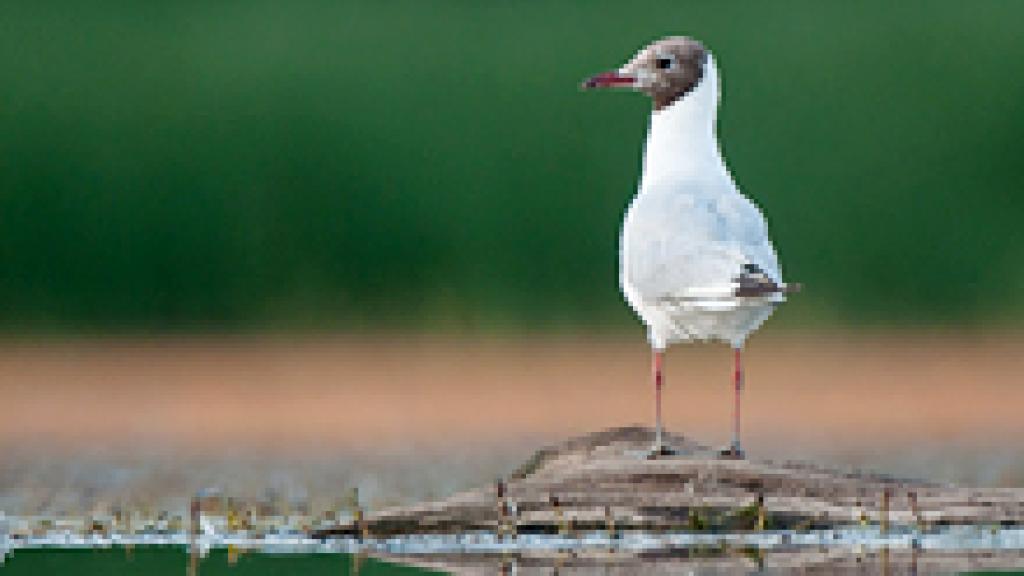Nature Protection
The Danube and its tributaries host a variety of fascinating and diverse ecological territories with many unique plants and animals. The rich and unique biodiversity and riverine habitats have been under severe pressure due to human activities for centuries. However, today the protection of environment and biodiversity is on the political agenda of the different Danubian States.

The rich and unique biodiversity of riverine habitats along the Danube and its tributaries have been under severe pressure due to human activities since the 19th century.
In order to enhance nature conservation along the Danube, the ICPDR regularly compiles an inventory of the species and habitats conserved in protected areas based on a list officially nominated by the Danubian States.
Protected areas are often directly linked with surface and/or groundwater bodies and their status is therefore also depending on the management practices/approaches and status of such water bodies, and vice versa. Such areas shelter valuable habitats for natural flora and fauna, and can provide numerous ecosystem services. At the Danube basin-wide scale, protected areas for the protection of habitats and species, nutrient sensitive areas, including areas designated as nitrates vulnerable zones (see Map 31), and other protected areas in Non EU MS have been compiled and are updated every six years. The DRBMP Update 2015 map shows 55 protected areas containing aquatic, wetland or waterside habitats of basin-wide importance. The national laws of Danubian and other European states are crucial factors, since each state is authorised to define the limits, extents and restrictions for every protected area within their territory.
Agreements under international law, such as the Danube River Protection Convention, the Convention on transboundary river courses and lakes, the Ramsar Convention on Wetlands, the World Heritage Convention and others, determine the procedures for the designation of protected areas.
EU Biodiversity Strategy and Green Deal
With its integrated approach and aim to achieve inter alia a healthy aquatic ecosystem and terrestrial ecosystems dependent on water and “good status” for all waters, the WFD is closely related to nature protection legislation, policies and required measures.
With the release of the EU Green Deal and the adoption of the new EU Biodiversity Strategy for 2030, increased value is given to the protection and restoration of natural ecosystems and biodiversity as well as the sustainable use of resources. The EU Green Deal also includes a long-term vision for the environment including all sectors and, with regards to river basin management, focusing on increased value given to protecting and restoring natural ecosystems and biodiversity as well as the sustainable use of resources. The natural functions of ground and surface water must be restored. This is essential to preserve and restore biodiversity in lakes, rivers, wetlands and estuaries, and to prevent and limit damage from floods. In addition to launching new initiatives, the European Commission will work with the Member States to step up the EU’s efforts to ensure that current legislation and policies relevant to the EU Green Deal are enforced and effectively implemented.
As a core part of the EU Green Deal, the European Commission has adopted the new EU Biodiversity Strategy for 2030 and an associated Action Plan with a comprehensive, ambitious, long-term plan for protecting nature and reversing the degradation of ecosystems. Concerning the restoration of freshwater ecosystems, the EU Biodiversity Strategy outlines the need for greater efforts to restore freshwater ecosystems and the natural functions of rivers in order to achieve the objectives of the Water Framework Directive. This can be done by removing or adjusting barriers that prevent the passage of migrating fish and improving the flow of water and sediments. To help make this a reality, at least 25,000 km of rivers will be restored into free-flowing rivers by 2030 through the removal of primarily obsolete barriers and the restoration of floodplains and wetlands. Member State authorities should review water abstraction and impoundment permits to implement ecological flows in order to achieve good status or potential of all surface waters and good status of all groundwater by 2027 at the latest, as required by the Water Framework Directive. The new Biodiversity Strategy promises unlocking at least 20 billion € per year for spending on nature.





